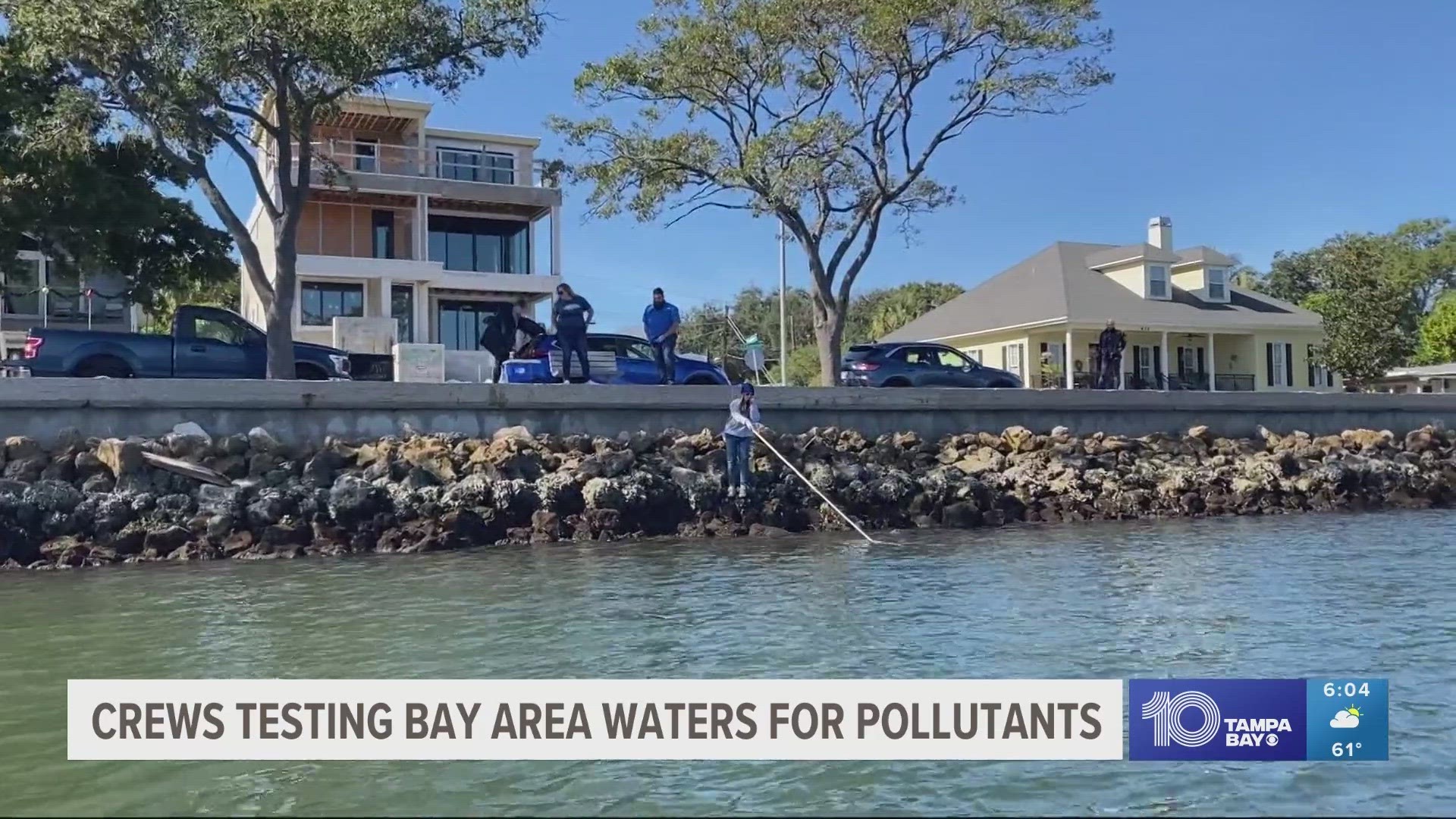HILLSBOROUGH COUNTY, Fla — In the search for how pollutants end up in our bays, scientists working on a two-year study tell us they're getting closer to finding answers.
The Nutrient Fingerprinting Project has a team of scientists and data collectors who visit 28 sites each month to collect and test water samples for pollutants. There's a variety of things that end up in our waters that can cause serious harm.
"Artificial sweeteners, pharmaceuticals, and pesticide metabolites," Chris Robbins, a scientist with Ocean Conservancy, listed.
The project gets detailed data on a granular level. Instead of just looking at nitrogen levels in the water, researchers are focusing on the cause of that nitrogen, like caffeine, fertilizers, and other things. This then enables scientists to understand which pollutants are manmade, and track where they came from.
Starting today, this research enters into a new phase where scientists are able to pinpoint, down to a neighborhood, exactly where pollutants are coming from and how they're entering our waterways.
This project started all because a St. Petersburg man, Joe Tatelbaum, asked what could be done about water pollution after a severe season of red tide and fish kills.
"'What can we do about it? Why does this need to happen? Does this have to happen?' And as a result, the folks at Ocean Conservancy called around and we organized the meeting with some of the leading scientists in Florida," Tatelbaum shared.
Now, seven months into data collection, scientists will use the research they're collecting to create legislative change.
"Showing the legislature that there is a lot of nutrients and where those nutrients are coming from, allows us to craft policies to craft laws with the legislature that will address those impacts," J.P. Brooker, the director of Florida Conservation for Ocean Conservancy, said.
The project is funded through a private-public partnership. Data is collected through specialty tools to track pollution to its source.
"Doing something that ultimately will help, you know, the ecosystem, will help the seagrasses and manatees and will make this place... more enjoyable and livable for its citizens, its residents," Robbins said.
Several organizations are involved in making this project happen. FIU, University of Florida, Florida State University, Tampa Bay, Waterkeeper, Tampa Bay estuary program, University of Wisconsin, and University of Massachusetts all play a role.
For the team of people behind this work, big change often starts with small steps.
"I think that if we raise up our hands and say, 'What can we do, big or small?' And we all pitch in a little bit, then we can make the world a better place," Tatelbaum said. "And starting right here on the bay."
If this research proves to be successful in Tampa Bay, organizers say they'd like to do the same work in other bays in our area, all with the goal of creating new policies to prevent pollution.
Malique Rankin is a general assignment reporter with 10 Tampa Bay. You can email her story ideas at mrankin@10tampabay.com and follow her Facebook, Twitter, and Instagram pages.

